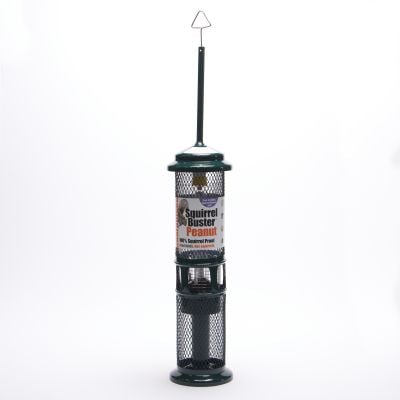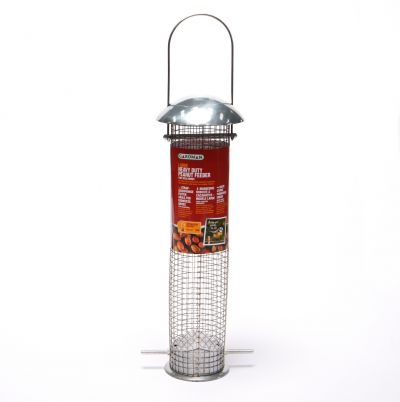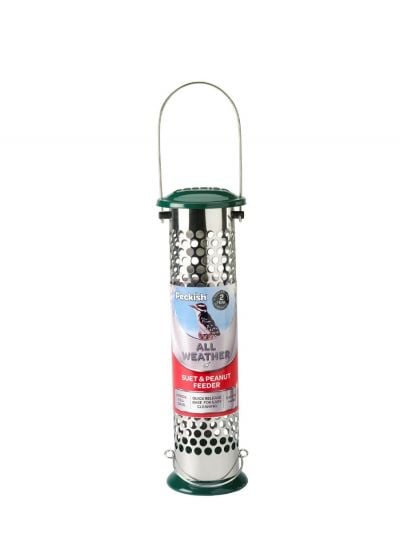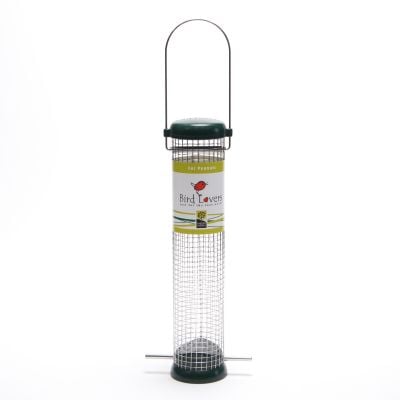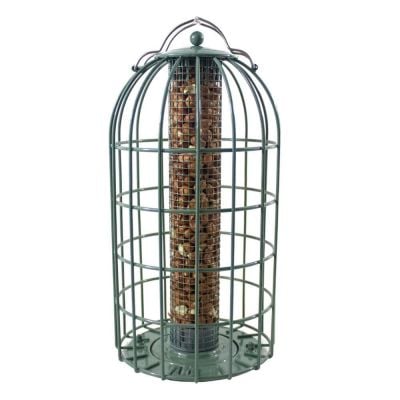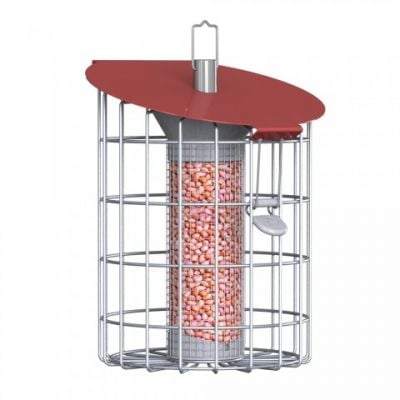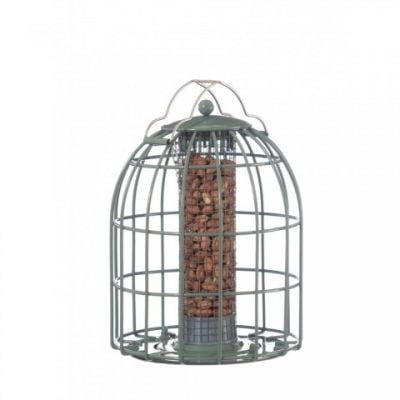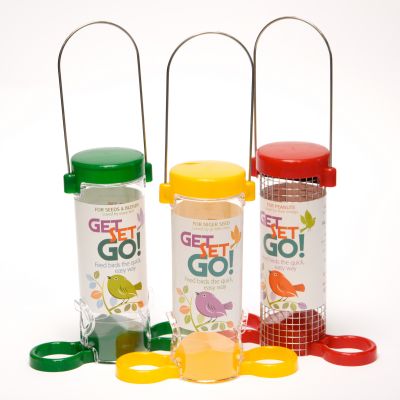Peanut bird feeders are a type of wild bird feeders designed to hold nuts in place so that birds can easily access them. All of them use a mesh wire to hold the nuts in place, which has wide enough gaps to allow birds to chip away at the nut without swallowing it whole.
This is an important feature in any bird feeder if you plan to feed whole nuts to birds. This is because some smaller species can easily choke on whole nuts if they swallow them whole, which can cause them to suffocate. Mesh peanut feeders are designed to prevent this from happening.
Other peanut bird feeders are designed to keep squirrels -- which are fond of peanuts -- away from the food. If peanuts are placed in the open they can attract squirrels, which will disrupt your birds’ feeding, as they cannot feed at the same time as a squirrel. In addition, squirrels can often damage your bird feeders, especially if they have a plastic base. Nuttery peanut bird feeders are built with large cages around the feeding tube itself, to stop larger animals from getting in.
Peanut feeders for garden birds are designed for whole peanuts. They hold them in place using a mesh wire which allows birds to peck at them without being able to consume the nut in one go. As well as whole peanuts, peanut feeders can also be used for suet pellets.
Peanuts, like many other forms of bird food, are readily consumed by rats and other forms of rodents, such as mice. Because of this, exposed peanuts can result in attracting rats to your garden. However, providing whole peanuts in a hanging mesh feeder is not likely to attract rats as it is unlikely that they will be able to gain access to the feeder.
While they are skilled climbers, rats are unlikely to be able to climb the smooth pole of your hanging mesh feeder. However, if your feeder is hung from or near a branch, there is a chance that rats may be able to gain access. If your garden does not contain any easily accessible food, rats will not choose to stay near your home.
You can choose to feed peanuts without a feeder, but only provided the nuts are not whole. You can buy crushed peanuts for birds in this case, and simply scatter them on a bird table or ground feeder with other food such as sunflower hearts or suet pellets. This is perfect for softbill ground-feeding species, such as the Blackbird, which can’t eat whole peanuts from a mesh feeder, but will readily eat crushed peanuts on a feeding table or ground tray.
If you wish to feed whole peanuts to birds, you must do so with a mesh wire feeder. This is because, if swallowed whole, peanuts can choke smaller birds, causing them to suffocate. In addition, certain birds prefer to eat them over crushed nuts, as they can peck and chip away at them. The Great spotted woodpecker is one such example of this.
The mesh wire in bird peanut feeders is intended to hold peanuts in place so that birds can chip away at them easily. The space between the wires is large enough for birds to peck at nuts, without allowing the nut to slip through and be swallowed by birds. This can be dangerous since whole peanuts can cause some smaller species of wild birds to choke. Whole peanuts should never be fed in anything other than a mesh wire feeder.
Many species of wild birds enjoy peanuts, and they provide much-needed energy and protein throughout the year. They are known to be one of the most popular forms of bird food in the UK.
Birds that eat peanuts include:
-Blue tits
-Long-tailed tits
-Great tits
-Greenfinches
-Goldfinches
-Siskins
-Nuthatches
-Great spotted woodpeckers




